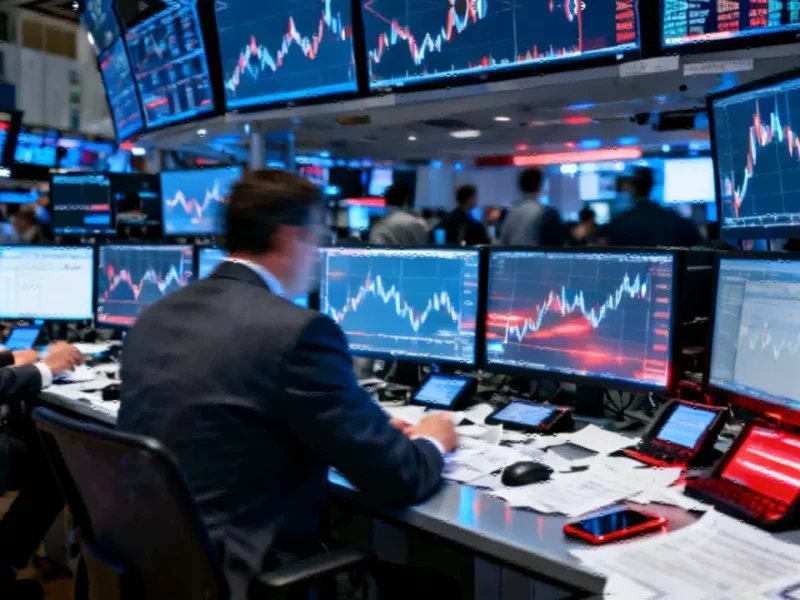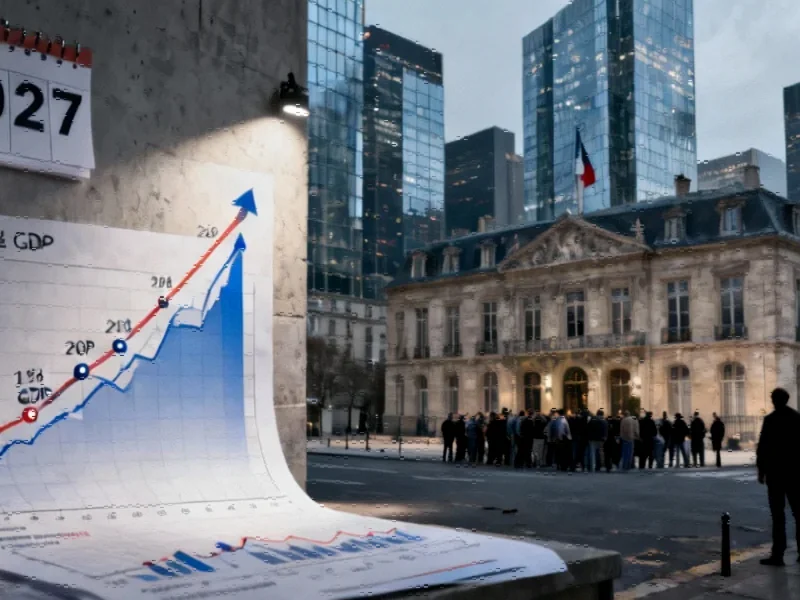Note: Featured image is for illustrative purposes only and does not represent any specific product, service, or entity mentioned in this article.
Fear Gauge Spikes to Highest Level Since Spring
Wall Street’s volatility index, often called the market’s “fear gauge,” surged to its highest midday level since late April this week, signaling a potential shift in investor psychology after months of relative calm. The CBOE Volatility Index (VIX) climbed as multiple concerns converged to create the most turbulent trading period since spring, putting investors on edge and threatening to disrupt some of this year’s most profitable trades.
While all three major indexes managed to close the week higher—with the S&P 500 rising 1.8% to approach record territory—the abrupt end to the market’s calmest stretch in years has left traders rattled. Many market participants are now betting that the increased swings will continue as underlying economic tensions remain unresolved.
Triple Threat: Trade, Banking, and AI Concerns Converge
The resurgence of volatility stems from three primary sources that have collectively undermined investor confidence. Renewed trade war tensions between major economic powers have resurfaced at a delicate moment for global growth. Simultaneously, regional banks are reporting increased loan losses, raising questions about the health of the financial system beyond the largest institutions.
Perhaps most significantly, a growing unease about the prolonged run-up in artificial intelligence stocks has introduced uncertainty into what had been one of the market’s most reliable sectors. As AI integration in corporate operations becomes more widespread, investors are questioning whether current valuations reflect realistic growth expectations.
Underlying Market Dynamics Shift
What makes the current volatility notable is that no single threat appears sufficient to derail the market independently. Instead, the combination of factors has created a perfect storm of uncertainty that has broken the market’s complacency. The situation reflects broader market jitters resurfacing as volatility spikes to multi-month highs, suggesting a potential regime change in how investors approach risk.
Market technicians note that the VIX’s sudden jump represents more than just short-term nerves. “When the fear gauge moves this dramatically after such an extended period of calm, it typically signals a change in market character rather than just a temporary blip,” noted one senior strategist.
Technology Sector Faces Particular Scrutiny
The technology sector, which has driven much of this year’s gains, finds itself at the center of the volatility storm. Recent industry developments in semiconductor manufacturing and processor technology have highlighted both the sector’s potential and its vulnerabilities. The strategic decisions by major players reflect how companies are positioning themselves for what could be a more volatile environment ahead.
These related innovations in computing technology represent significant long-term bets that must now navigate shorter-term market turbulence. The increased volatility comes as companies make substantial investments in next-generation technologies that require stable financing conditions to reach fruition.
Broader Implications for Investors
For market participants, the return of volatility necessitates a reconsideration of risk management strategies that may have grown complacent during the extended calm. The situation is further complicated by market trends in specialized technology sectors where ownership changes can signal shifting confidence levels among industry insiders.
Looking ahead, analysts suggest that investors should prepare for several potential scenarios:
- Extended volatility: The current swings could persist as markets recalibrate to new economic realities
- Sector rotation: Money may flow out of high-flying AI stocks into more defensive positions
- Opportunistic buying: Market dips could present entry points for long-term investors
- Hedging activity: Increased use of options and other derivatives to manage risk
While the fundamental economic backdrop remains relatively strong, the return of volatility serves as a reminder that markets rarely move in straight lines indefinitely. The coming weeks will test whether this is merely a temporary adjustment or the beginning of a more significant market transition.
This article aggregates information from publicly available sources. All trademarks and copyrights belong to their respective owners.



